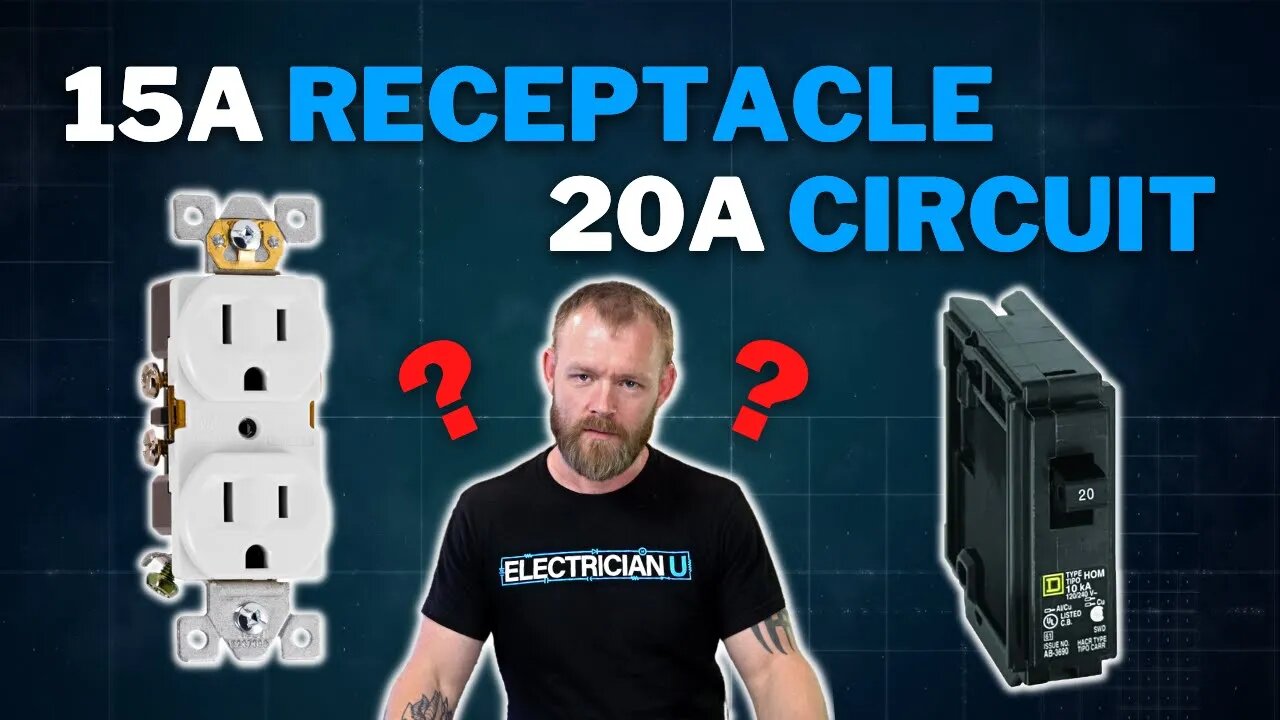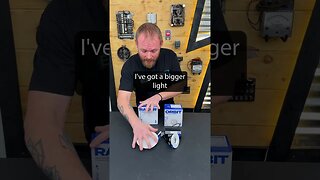Premium Only Content

Won't These Melt?!? 15amp Receptacles on 20 amp Circuits!!!
In the latest episode of Electrician U, Dustin digs into some of the reasons WHY we are allowed to install 15a devices on 20a rated circuits in certain instances and what can happen if we overload those circuits.
🤘⚡️MEMBERSHIP⚡️🤘
JOIN ELECTRICIAN U - become a member and get:
FREE Continuing Education every year
FREE Practice Exams
FREE Monthly Video Courses
FREE Weekly Live Instructor-Led Classes
FREE Monthly Educational Newsletter
Premium Members-Only Content
Private Discord Channel
Monthly Members-Only Discord Chats
Sign up here --- https://www.electricianu.com/electrician-u-membership/
🎧🎹MUSIC AND VIDEO:🎹🎧
https://www.facebook.com/descantmv
🎬✍️ART AND ILLUSTRATION:✍️🎬
https://www.daverussoart.com
We usually see the results of breakers not tripping as they should, but the devices melting instead around the winter months where portable space heaters are more plentiful, or circuits are overloaded with Christmas lighting. Part of the problem with this (at least on the residential spectrum) is due in part to being able to install a 15a receptacle (and the associated wiring) but that 15a breaker can EASILY be replaced with a 20a breaker by anyone, thus negating the wiring and associated device being able to sustain the increased amperage and failing.
In fact, article 210.21 (B) of the NEC states that SINGLE receptacles installed on an individual branch circuit shall have an ampere rating of not less than that of the branch circuit. BUT 201.21(B)(3) and table 210.21(B)(3) allows us to install 15 OR 20 amp rated receptacles on a 20a branch circuit. Why would this be? Well, if you were to relate it to a service size, not EVERYTHING will be used at its capacity at the same time, and we are allowed to install one under this assumption. If you added up ALL the 20a breakers in your panel, along with the larger ones for your AC, water heater, etc., it would probably end up well over 200a on a standard 200a service in most residences. Another way to look at it would be that while you may be utilizing the entire 20a worth of current on the ENTIRE circuit (over all the devices on the circuit), the chances are very slim that you would be pulling 20a worth at any one device.
210.21(B)(2) further states that a receptacle connected to a branch circuit supplying 2 or more receptacles (which is most of the circuits we would install), that receptacle shall not supply a total cord-and-plug connected load in excess of the maximum specified in Table 210.21(B)(2). This table, for instance, shows us that for a 15 or 20a circuit, with a 15a receptacle, that we can have a maximum load on that cord-and plug connected circuit of 12a. If that were to be adhered to, there would be no problem. But are we, the installing electrician, available to guide the homeowner as to what they should plug into their house circuity or are most homeowners savvy to our electrical code (or even know there is one)? And considering the colder months and holiday months when additional load that isn’t normally being used, you can see why it can turn into a problem.
But wouldn’t the 20a breaker just trip if you had more than 20a worth of current being drawn on it? Not necessarily. If you dumped more than 20a all at once, then yes, it should trip. But thermally, if you allowed that amperage and heat to build up slowly (in the case of small electrical space heaters) then the breaker is designed to trip at about 130% of the value it is rated for. In the case of a 20a breaker, that would be 24a! And someone was to plug those space heaters into a single 15a rated receptacle, then that receptacle COULD melt before the breaker tripped!
210.23(A)(1) & (A)(2) also mention how much you can plug into a branch circuit, (A)(1) telling us that the rating of any one cord-and-plug connected equipment not fastened in place shall not exceed 80% of the branch circuit ampere rating, and (A)(2) telling us that utilization equipment fastened in place shall not exceed 50% of the branch circuit ampere rating where lighting, and/or other cord-and plug connected equipment are also supplied.
So, how can we combat these potential issues? Install nothing but 15a rated devices with 15a rated wiring and breakers? Or maybe nothing but 20a devices with 20a rated wire and 20a rated breakers. Or maybe some general electrical education of the general population is a better way to go? What are your thoughts? Let us know in the comments below! If you have a question or topic, you would like to know more about please let us know!
We hope this has brought some light to this situation. Please continue to follow Electrician U and Dustin as we are constantly adding new content to keep our followers up to date on the happenings of our industry.
-
 0:50
0:50
Electrician U
1 year agoWhat Are Lumens?
12.6K4 -
 2:48
2:48
Steven Crowder
19 hours agoCROWDER CLASSICS: What’s This? | Nightmare Before Kwanzaa (Nightmare Before Christmas Parody)
232K12 -
 33:49
33:49
Quite Frankly
16 hours agoThe Christmas Eve Midnight Telethon
33.1K4 -
 2:12:46
2:12:46
Price of Reason
15 hours agoAmber Heard BACKS Blake Lively Lawsuit Against Justin Baldoni! Is Disney CEO Bob Iger in TROUBLE?
13.8K7 -
 1:01:17
1:01:17
The StoneZONE with Roger Stone
10 hours agoChristmas Edition: Why the Panama Canal is Part of the America First Agenda | The StoneZONE
77K24 -
 LIVE
LIVE
LFA TV
20 hours agoLFA TV CHRISTMAS EVE REPLAY
1,843 watching -
 4:33:48
4:33:48
tacetmort3m
1 day ago🔴 LIVE - THE ZONE KEEPS PULLING ME BACK - STALKER 2 - PART 15
54.4K12 -
 22:45
22:45
Brewzle
17 hours agoI Went Drinking In A Real Bourbon Castle
37.7K3 -
 48:36
48:36
PMG
1 day ago $2.69 earned"Parkland Parent Speaks Out On Kamala Harris Using Victims"
30.1K4 -
 4:06
4:06
The Lou Holtz Show
16 hours agoCoach Lou Holtz’s Heartfelt Christmas Message 🎄 | Family, Faith & Notre Dame Spirit 💚 #christmas
22.3K